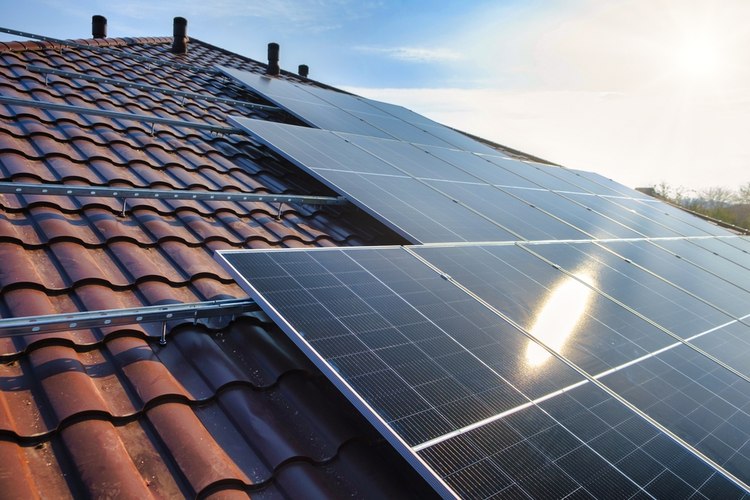Maximizing Energy Efficiency: A Guide to Electricity and Gas Usage
In today's world, managing electricity and gas consumption is not just about reducing bills; it's about contributing to a sustainable future. This comprehensive guide will explore various aspects of energy usage, providing practical tips to help you optimize your electricity and gas consumption while maintaining comfort in your home.

To reduce appliance-related energy costs, consider upgrading to energy-efficient models. Look for appliances with high energy ratings, as they consume less electricity while providing the same level of performance. Additionally, unplug devices when not in use or use smart power strips to eliminate standby power consumption.
What role does your thermostat play in energy consumption?
Your thermostat is the control center for your home’s heating and cooling systems, which often account for the largest portion of energy bills. A programmable or smart thermostat can significantly reduce energy waste by automatically adjusting temperatures based on your schedule and preferences.
During winter, set your thermostat to lower temperatures when you’re asleep or away from home. In summer, do the opposite by allowing temperatures to rise when you’re out. Even small adjustments can lead to substantial savings over time. For maximum efficiency, consider installing a smart thermostat that learns your habits and optimizes settings accordingly.
How can you reduce your gas usage at home?
Gas is commonly used for heating, cooking, and hot water in many households. To reduce gas consumption, start by ensuring your home is well-insulated. Proper insulation in walls, attics, and floors can significantly decrease the amount of gas needed to heat your home.
Regular maintenance of gas appliances is crucial for efficiency. Have your furnace or boiler serviced annually to ensure it’s operating at peak performance. When cooking, use lids on pots to retain heat and cook faster, reducing gas usage. For hot water, consider lowering the temperature on your water heater and installing low-flow showerheads to minimize hot water consumption.
What are some effective ways to lower your electricity bills?
Reducing electricity bills requires a multi-faceted approach. Start by switching to LED light bulbs, which use up to 75% less energy than traditional incandescent bulbs. Make use of natural light whenever possible and develop a habit of turning off lights when leaving a room.
Improve your home’s insulation to reduce the workload on your heating and cooling systems. Seal any air leaks around windows and doors to prevent drafts. During summer, use blinds or curtains to block out heat from the sun, reducing the need for air conditioning. In winter, open curtains during the day to let in warm sunlight and close them at night to retain heat.
How can energy-efficient practices benefit the environment?
Adopting energy-efficient practices not only reduces your bills but also has a positive impact on the environment. By consuming less electricity and gas, you’re directly reducing your carbon footprint. This decreased demand for energy leads to lower greenhouse gas emissions from power plants and reduced extraction of fossil fuels.
Energy efficiency also contributes to resource conservation. By using less energy, we reduce the strain on natural resources and help preserve them for future generations. Additionally, as more households adopt energy-efficient practices, it creates a collective impact that can significantly reduce overall energy consumption on a national or global scale.
What are some real-world cost comparisons for energy-efficient upgrades?
Understanding the potential savings from energy-efficient upgrades can help you make informed decisions about home improvements. Here’s a comparison of some common energy-efficient upgrades and their estimated costs and savings:
| Upgrade | Average Cost | Estimated Annual Savings | Payback Period |
|---|---|---|---|
| LED Light Bulbs | $1-$4 per bulb | $1-$2 per bulb | 6-24 months |
| Smart Thermostat | $200-$500 | $50-$100 | 2-5 years |
| Energy Star Refrigerator | $700-$1,500 | $30-$60 | 12-25 years |
| Attic Insulation | $1,500-$3,000 | $100-$300 | 5-10 years |
| Double-Pane Windows | $300-$700 per window | $100-$400 | 10-20 years |
Prices, rates, or cost estimates mentioned in this article are based on the latest available information but may change over time. Independent research is advised before making financial decisions.
While some upgrades may have longer payback periods, they often come with additional benefits such as increased home comfort and potential increases in property value. It’s important to consider both immediate and long-term benefits when evaluating energy-efficient upgrades for your home.
In conclusion, managing your electricity and gas consumption is a multifaceted approach that involves understanding your usage patterns, making smart upgrades, and adopting energy-efficient habits. By implementing the strategies discussed in this guide, you can significantly reduce your energy bills while contributing to a more sustainable future. Remember that even small changes can add up to substantial savings over time, both for your wallet and the environment.






